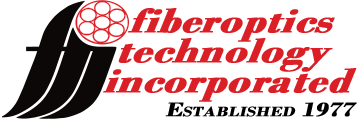FTI is demonstrating a new LED Hybrid light source technology at 2006 Vision Show East.
The technology borrows from already existing design strategies to produce a fiber optic light source made from LED chips. The company uses readily available optics, integrated with unique heat management and focusing system, to couple multiple LEDs efficiently, and output the result in a manner similar to an EKE type lamp. Furthermore, the mechanical package is designed to allow replacement of individual “Light Cells ™” during the operating life of the unit, assuring viable preventative maintenance capability and very low operating costs.
At this time, results are encouraging, but not yet at the levels the company hopes to achieve within the next 6 months. Recent improvements in chip technology, commercialized but not yet available, will improve current output by 25%.
Designing the mounting structure to accept additional “Light cells ™” will boost performance 25%, to the point where commercialization of the unit will be practical for Wafer Dicing, Wire Bonding, Pick and Place, and other semiconductor/Electronic OEM applications, as well as human inspection applications. Rather than try to concentrate the light in a small focused beam, the company’s goal is to achieve a light output beam equivalent to the shape, size and intensity of an 150W, 21V EKE lamp.
- Current Photonic (visible light) output of this technology is measured at 25%-30% of a 150W, 21V EKE lamp at the end of 5mm and 12mm randomized 40” long fiber optic light guides.
- Degradation of light output due to heat build-up is limited to 15%.
- Spot output is very uniform, with not more than 5% difference from center to fringe measured using randomized light guides and focusing lens at 4”.
- The focal beam is optimized for 5-12mm active diameter light guides; areas large enough to accommodate traditional industrial fiber optic lighting components. As already mentioned, only a 5% decline in comparative luminous flux measurements have been recorded between the current state of Hybrid Lighting Technology (HLT ™) and an EKE lamp when comparing 5mm and 12mm active diameter light guides, even though the area of a 12mm diameter increases 5.75 times when compared to a 5mm area. (If FTI chose to optimize the output at 5mm, the resulting photonic intensity (visible light) would exceed the output of an EKE lamp)
The Company’s Vice President of Sales and Marketing, Steve Giamundo said, “FTI is happy to share its progress in Hybrid Lighting Technology, representing the next paradigm in light source technology.
Now that a viable platform has been developed, we’re happy to share our knowledge, and demonstrate our desire to accept application and product design input from the marketplace, to create a commercially successful product for the OEM and Integrator niches of the vision community.
Hybrid Lighting Technology (HLT ™) should provide the optimum lighting solution; a long lasting, cool, uniform and bright lighting source which is capable of providing output in multiple shapes, in various footprints, with a myriad of colors, by remote access, in a pulsing or continuous format, which can be computer controlled, and built to withstand the rigors of industrial process applications for optimum results.”
For further information, contact:
Steven Giamundo, 800.433.5248
Tim Beeman, Sales Manager 800.433.5248
Scott Bouchard, Associated Vision Reps, 315.255.0559

